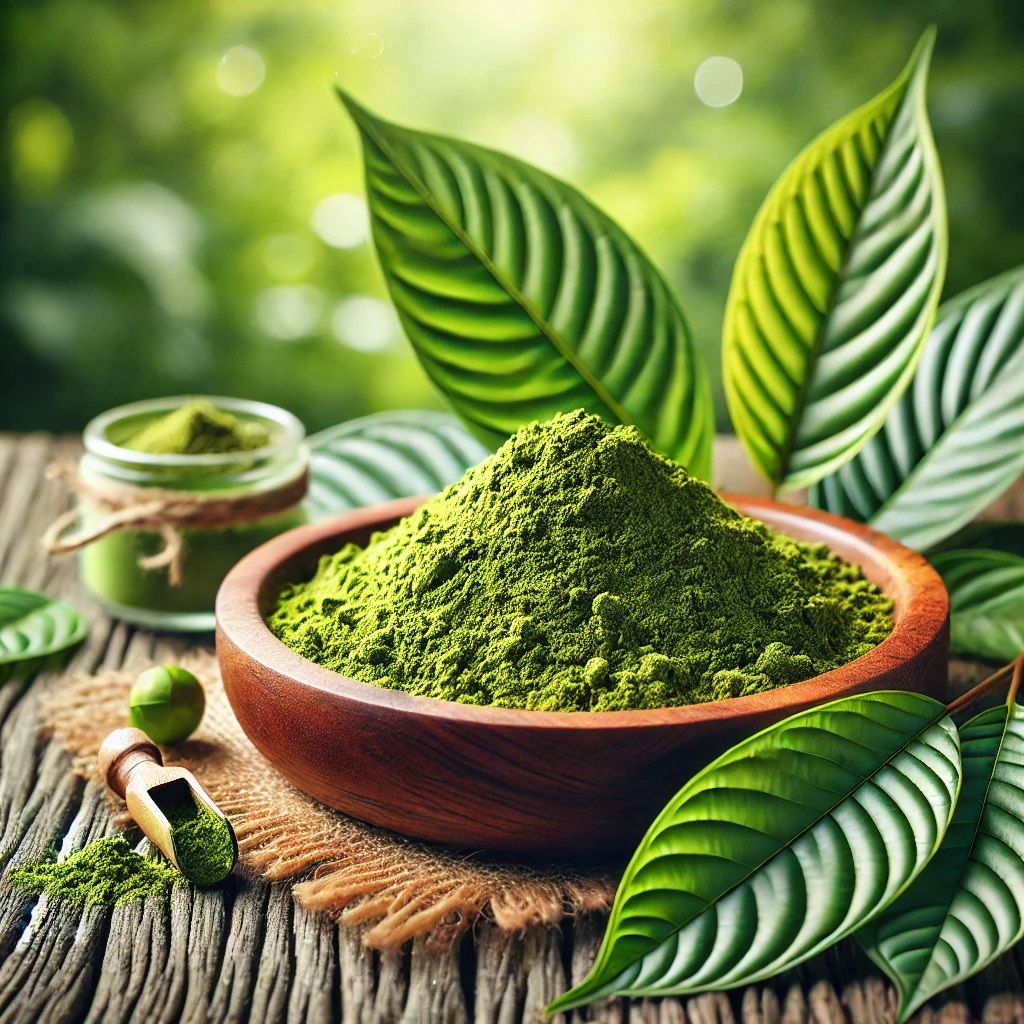
Kratom, scientifically known as Mitragyna speciosa, is a tropical evergreen tree native to Southeast Asia, primarily found in Thailand, Malaysia, Indonesia, and Papua New Guinea. This natural herb has gained popularity worldwide due to its various medicinal and recreational uses. But what does kratom look like in its natural form?
Understanding Kratom’s Natural Appearance
In its natural habitat, kratom is a large tree that can grow up to 25 meters (82 feet) tall, with a spread of about 5 meters (16 feet). It belongs to the coffee family (Rubiaceae) and has a strong resemblance to other plants within the same family. The tree’s natural appearance can be broken down into the following components:
- Leaves:
- The most distinctive feature of the kratom tree is its large, oval-shaped leaves. These leaves are dark green, glossy, and can grow up to 8 inches long and 5 inches wide. The edges of the leaves are smooth, and the veins running through them vary in color, ranging from white to green and red. These colors indicate the different strains of kratom, each associated with different effects when consumed.
- Flowers:
- Kratom flowers are small and spherical, usually yellow in color. They grow in clusters at the ends of the branches. The flowers are not as prominent as the leaves and are often overlooked, but they play a crucial role in the reproduction of the plant.
- Bark:
- The bark of the kratom tree is smooth and gray. As the tree ages, the bark may become slightly rougher, but it remains relatively unremarkable compared to the vibrant leaves.
- Fruits:
- Kratom trees also produce small, pod-like fruits that contain the seeds for propagation. These fruits are not commonly discussed since they are not typically used in the consumption of kratom.
Kratom in the Wild
Kratom trees thrive in hot, humid environments typical of Southeast Asia. In the wild, these trees can often be found growing near rivers, where the soil is rich and well-drained. The tree’s large size and dense foliage provide a lush, green canopy, making it a prominent feature in the forests where it grows.
The tree’s leaves are harvested several times a year, with mature trees providing a continuous supply of fresh leaves. Once harvested, the leaves are either dried and ground into a powder or used to make extracts, which are then sold in various forms including capsules, tablets, and tea.
The Cultural Significance of Kratom
For centuries, kratom has played an integral role in the traditional medicine of Southeast Asian cultures. Locals have chewed the leaves for their stimulant effects, brewed them into teas for their calming properties, or used them as a remedy for various ailments like pain and fatigue. The natural appearance of kratom has remained unchanged, as it continues to be cultivated and harvested in traditional ways.
FAQs about Kratom
1. What does fresh kratom look like?
- Fresh kratom leaves are large, glossy, and dark green. The veins on the leaves can be white, green, or red, depending on the strain. The leaves are oval-shaped with smooth edges.
2. How tall does a kratom tree grow?
- In its natural environment, a kratom tree can grow up to 25 meters (82 feet) tall with a spread of about 5 meters (16 feet).
3. Where is kratom naturally found?
- Kratom is naturally found in the tropical forests of Southeast Asia, particularly in Thailand, Malaysia, Indonesia, and Papua New Guinea.
4. What do the different vein colors on kratom leaves signify?
- The vein colors (white, green, red) indicate different kratom strains, each associated with unique effects. For instance, white-veined kratom is typically known for its stimulating effects, while red-veined kratom is popular for its relaxing properties.
5. Can you identify kratom by its bark?
- While the bark of the kratom tree is smooth and gray, it is not a primary identifying feature. The large, glossy leaves are the most recognizable part of the tree.
6. Is kratom used in its natural form?
- Yes, kratom leaves are often used in their natural form by being chewed directly, although they are more commonly dried and processed into powder, capsules, or tea.
Conclusion
Kratom is a remarkable plant with a long history of use in traditional medicine. Its natural form, with large, glossy leaves and towering height, makes it a standout tree in the tropical forests of Southeast Asia. Whether you’re new to kratom or have experience with it, understanding what it looks like in its natural state enhances your appreciation for this ancient herb. As kratom continues to gain popularity worldwide, it’s essential to recognize its origins and the natural beauty it holds in its original environment. To know more details, read this :can-kava-and-kratom-be-used-together-for-enhanced-effects
